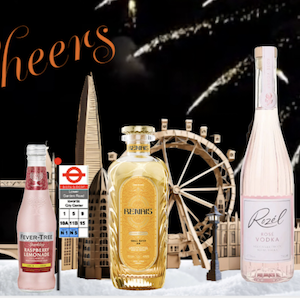MASHUP: A Cultural and Culinary Infusion
By Jo Phillips
For the first time ever, London will be host to the Design Biennale. In honour of the 500th anniversary of Sir Thomas Moore’s Utopia, which was published in 1516, the 2016 theme is Utopia by Design. In response to this, Taiwan has produced Eatopia, which provides a look at Taiwan’s history and mixed cultural heritage through food. Curated by architect Rain Wu and designer Shikai Tseng in collaboration with chef Chung-Ho Tsai and support from architectural designer Lydia Chang.
Eatopia is an interactive experience. It is set in a forest filled with vegetation. Among those, tree bark fragments have been placed around the setting, which can be removed and put back by the audience. This involves them in the constant development of Taiwan and makes a clear statement about the vast cultural diversity of the nation.
Nothing represents culture better than the food eaten by locals. It’s enshrouded in history, ritual and meaning. The installation recognises the special place that food has by creating what can only be described as a culinary experience. Below, we explain the five dishes and their significance.
Crossing the Strait – Using ingredients like honey gel, toasted bun, edible flowers gold leaf and mint, this dish represents the relationship between the natural environment and matrimony. It refers to a period in 17th century history when the men from Hakka and Hokkien-speaking tribes of Southern China crossed the Taiwan Strait in search of better lives. Once in Taiwan they would choose to get married within the indigenous tribes for better opportunities and rights. It sparked what would follow as centuries of cultural integration.

Order on the Island – Only using green tea jelly and coconut milk chips, the second dish has been designed as a ‘ruler that measures the land’. The simplicity of the dish is contrasted by the historical relevance. It relates to the colonial involvement of Japan that spanned almost fifty years. The new, modern structures within the government marked a different sense of order. Also, with the colonial rule came new industrial development. The colonial administration also conducted in-depth ethnographic and cultural surveys, which were the first systematic attempts at delineating the disparate cultural contours of Taiwan. The shape of this dish refers to the building and development of Taiwan that occurred during this period.
Liberation – Made with ingredients like bread, chives, chilli and olive oil capsules, this dish is designed as a ‘cage filled with liberated Taiwanese spirits’. The Chinese Civil War and the defeat of the Nationalist Party meant that the members of the party fled to Taiwan. In 1949, the party imposed martial law. In order to stop anti-Nationalist views Taiwanese government suppressed and censored freedom of speech in all areas. Only after 38 years did the government lift the ban in 1987. The design of this dish represents this; in what looks like a cage being lifted, the moment of cultural freedom in Taiwan is recognised.
Mutualism – Using ingredients like beetroot juice, pineapple and toast, the fourth dish is a reflection of the balance that must be kept between the native and immigrant workers in order for the labour force to work successfully. Just like the two elements are balanced in this dish, the two groups of people must work together. It represents unity, respect and support.
The Melting Pot – Finally, in the last dish of this unique experience, all the ingredients from the previous dishes are mixed together to create a cream soup. The melting pot is a represents that Taiwan is made from its history yet utopia can be achieved by combining all the elements that make the nation great. It can only be described as a ‘cultural collision and fusion among the distinct ethnic, age and social groups of Taiwan’. A true eatopia!
Eatopia, can be found during the London Design Biennale at Somerset House, from 7th September- 27th September 2016. More information can be found here. In addition, tickets are available here.










